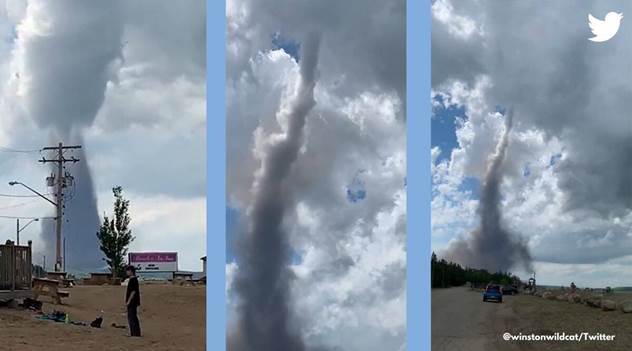Description

Copyright infringement not intended
Context: A landspout emerged in Watrous, a small town in Canada.
About:
- Landspout is a term created by atmospheric scientist Howard B. Bluestein in 1985 for a kind of tornado not associated with a mesocyclone.
- The Glossary of Meteorology defines a landspout as a colloquial expression describing tornadoes occurring with a parent cloud in its growth stage and with its vorticity originating in the boundary layer.
- The parent cloud does not contain a preexisting mid-level mesocyclone. The landspout was so named because it looks like "a weak Florida Keys waterspout over land.
- Landspouts are typically weaker than mesocyclone-associated tornadoes spawned within supercell thunderstorms, in which the strongest tornadoes form.
Characteristics:
- Landspouts are a type of tornado that forms during the growth stage of a cumulus congestus or occasionally a cumulonimbus cloud when an updraft stretches boundary layer vorticity upward into a vertical axis and tightens it into a strong vortex.
- These generally are smaller and weaker than supercell tornadoes and do not form from a mesocyclone or pre-existing rotation in the cloud. Because of this lower depth, smaller size, and weaker intensity, landspouts are rarely detected by Doppler weather radar (NWS).
- Landspouts share a strong resemblance and development process to that of waterspouts, usually taking the form of a translucent and highly laminar helical tube.
- Landspouts are considered tornadoes since a rapidly rotating column of air is in contact with both the surface and a cumuliform cloud.
- Not all landspouts are visible, and many are first sighted as debris swirling at the surface before eventually filling in with condensation and dust.
- Orography can influence landspout (and even mesocyclone tornado) formation.
Watch: Strange landspout emerges in Canada, shocks netizens | Trending News,The Indian Express
1.png)












